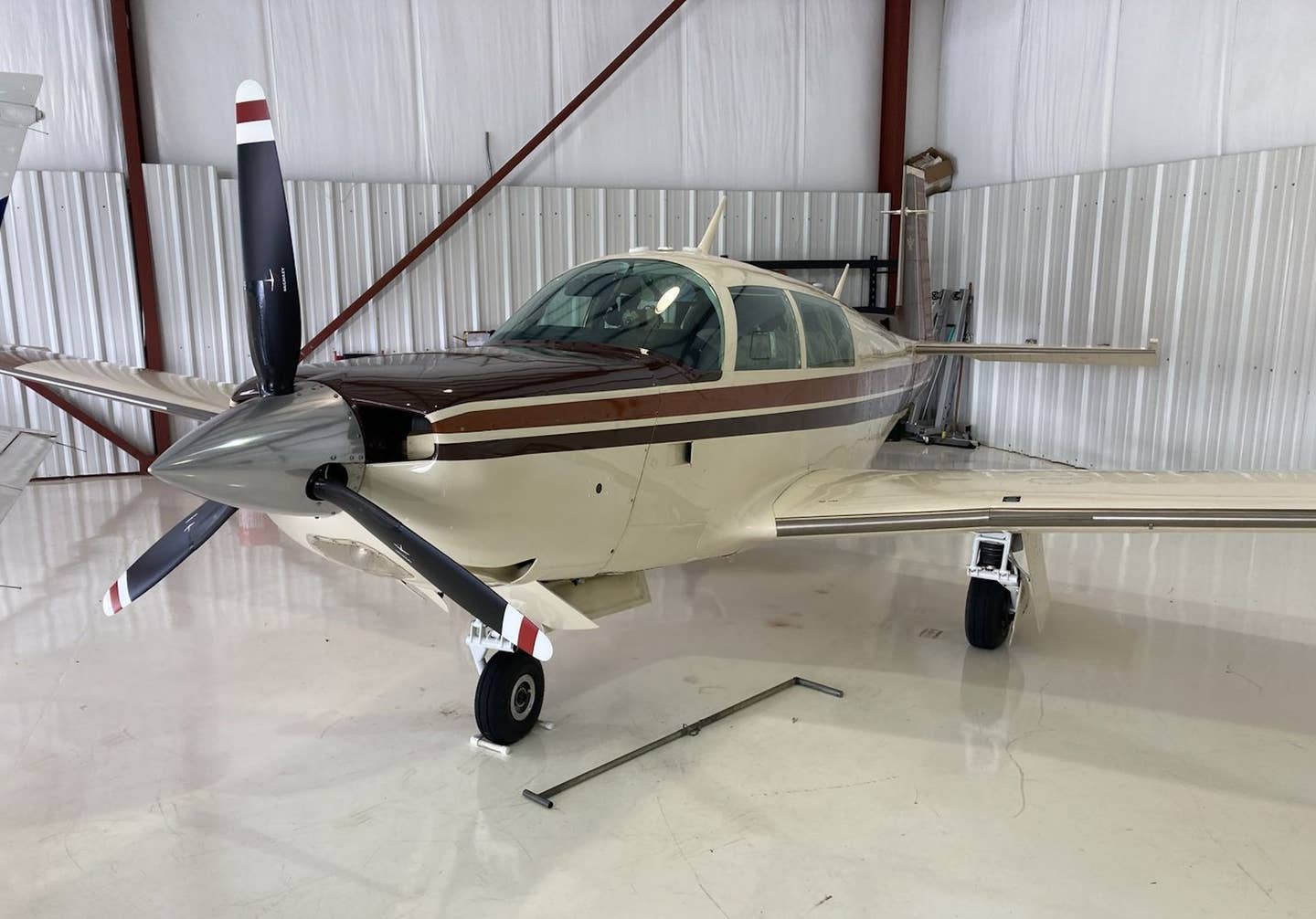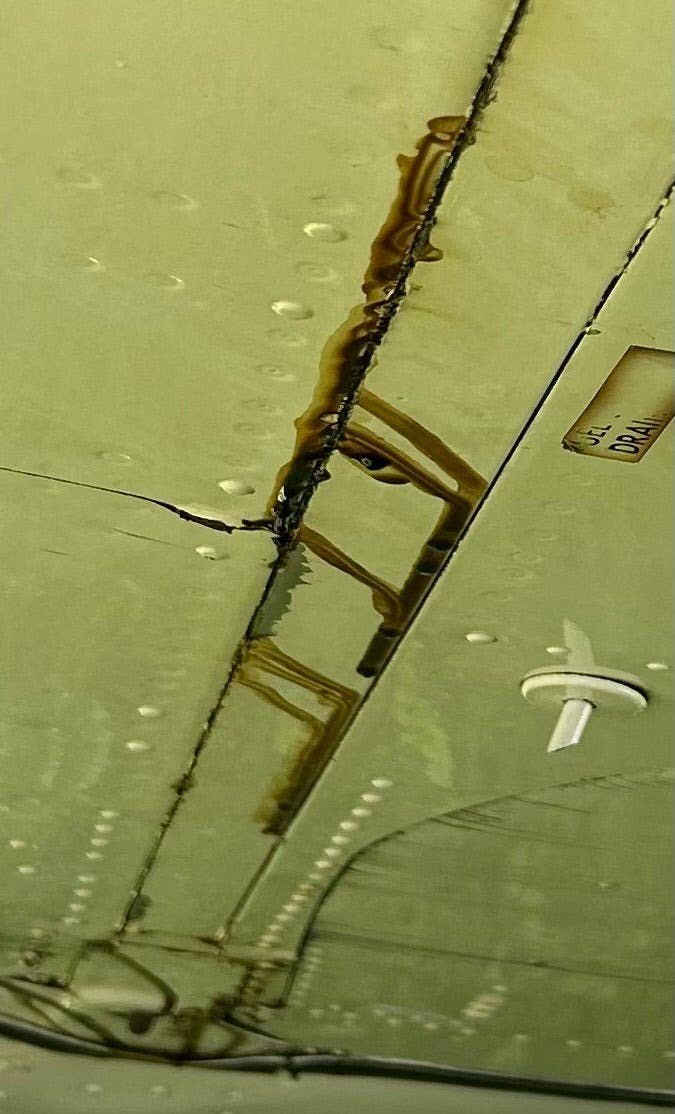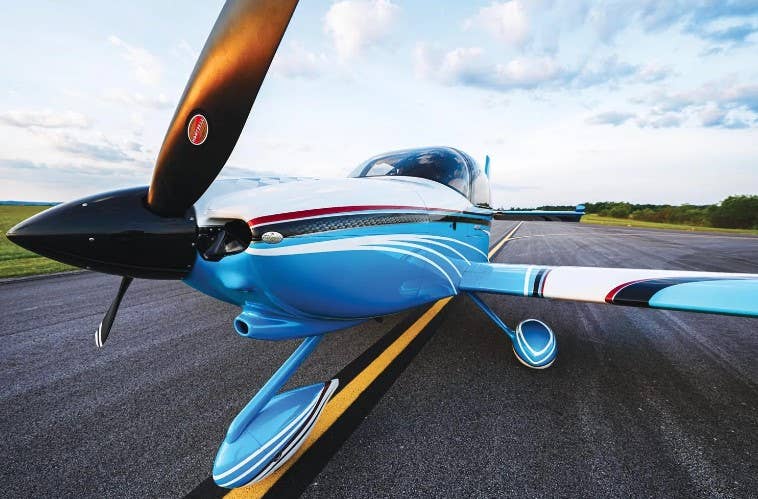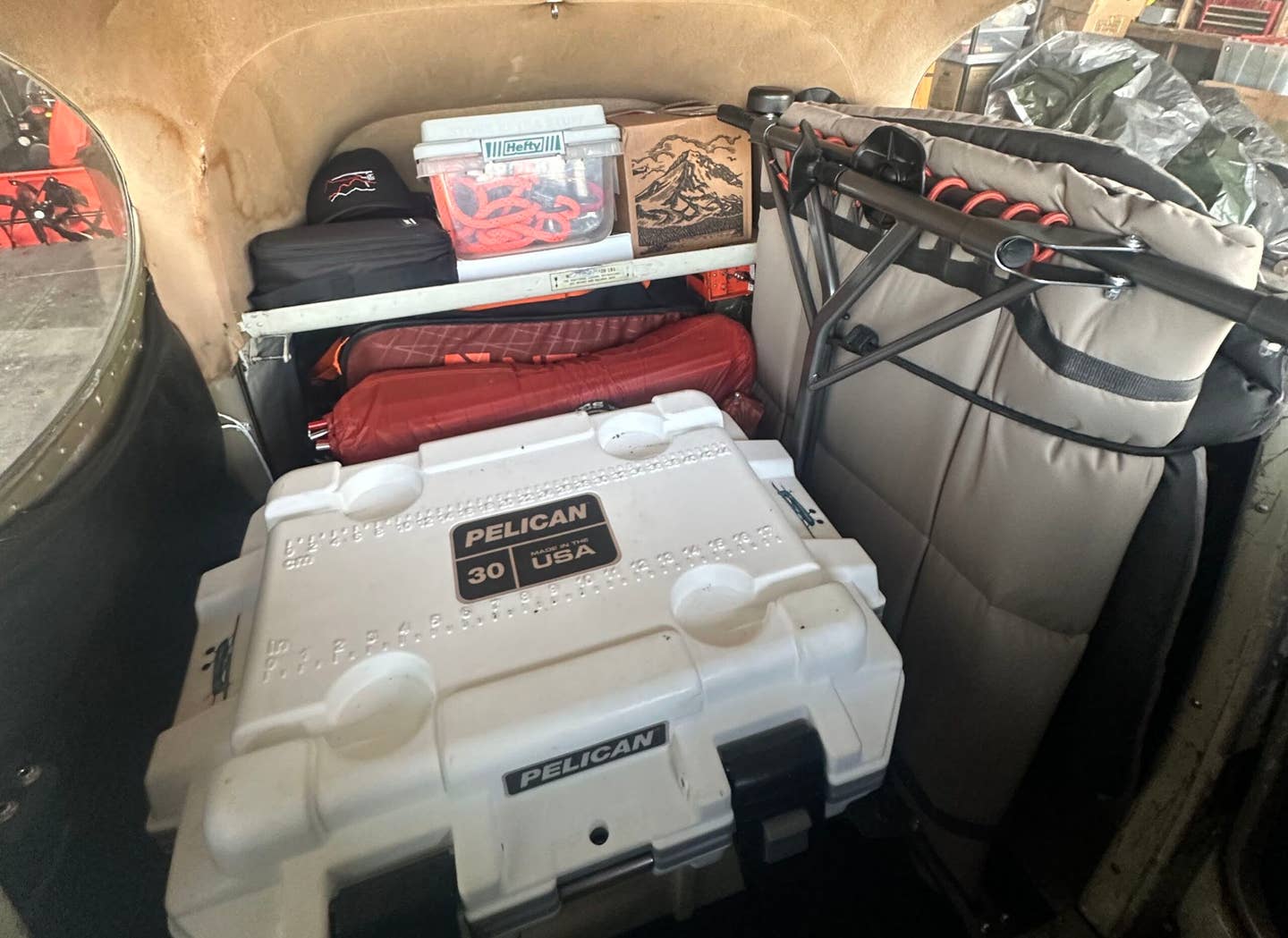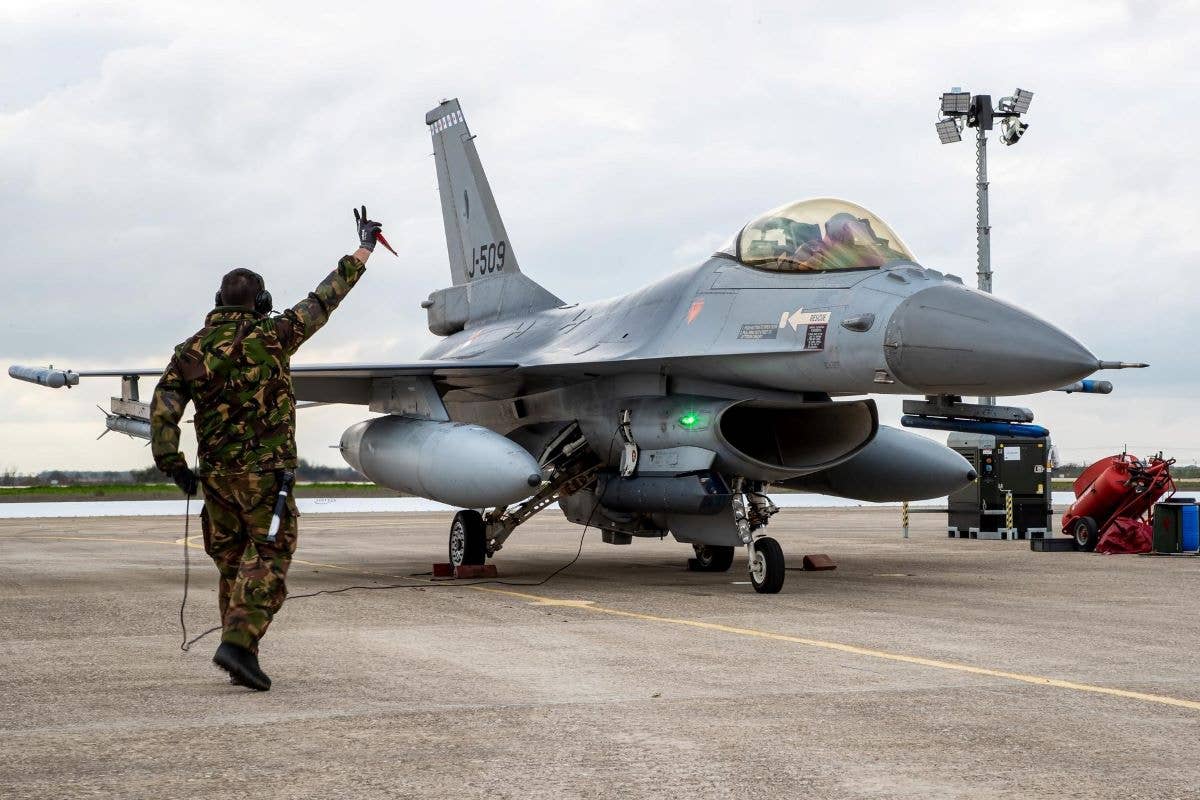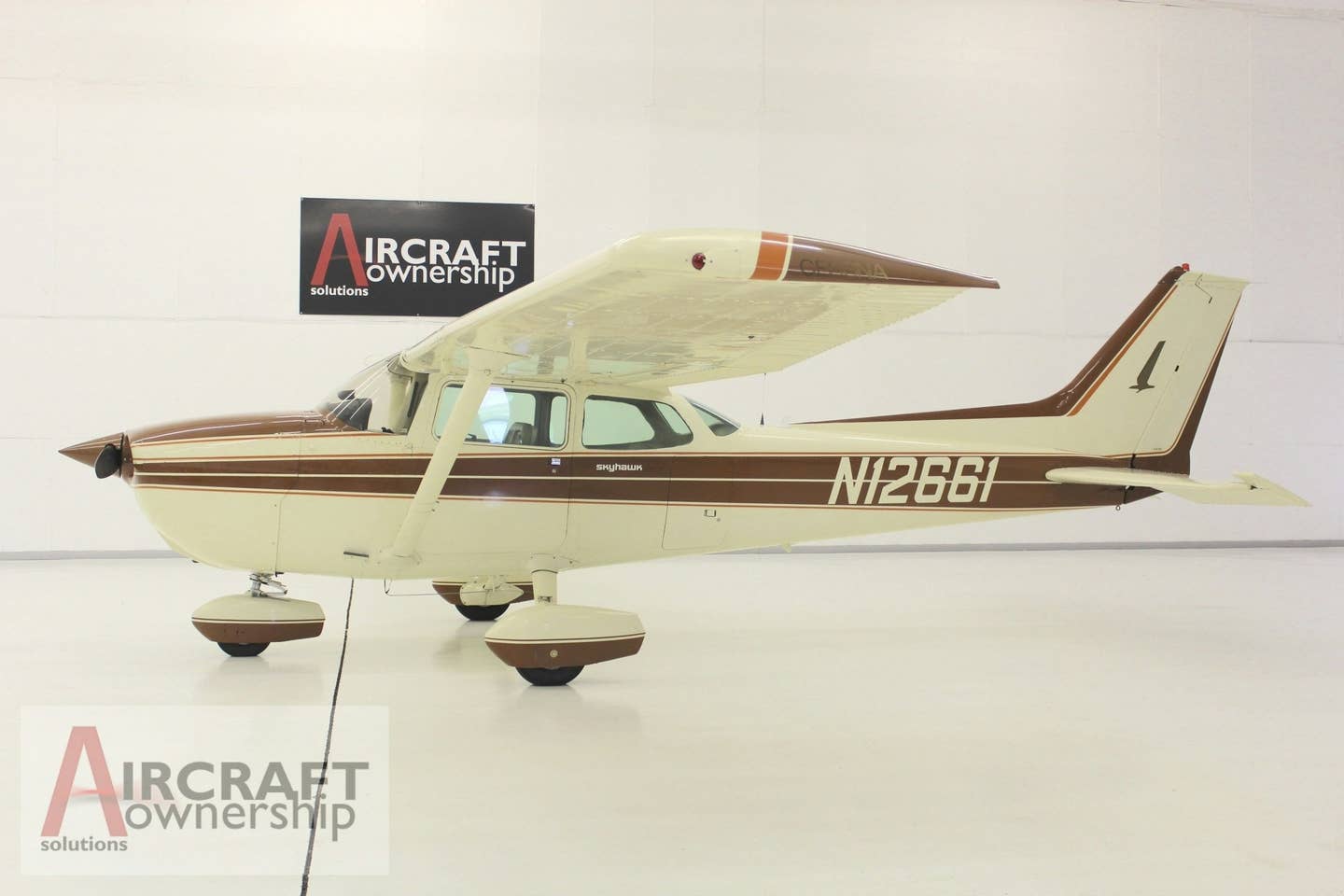FLYING Classics: Lockheed Created the ‘Impossible’ SR-71 Blackbird to Replace the U-2
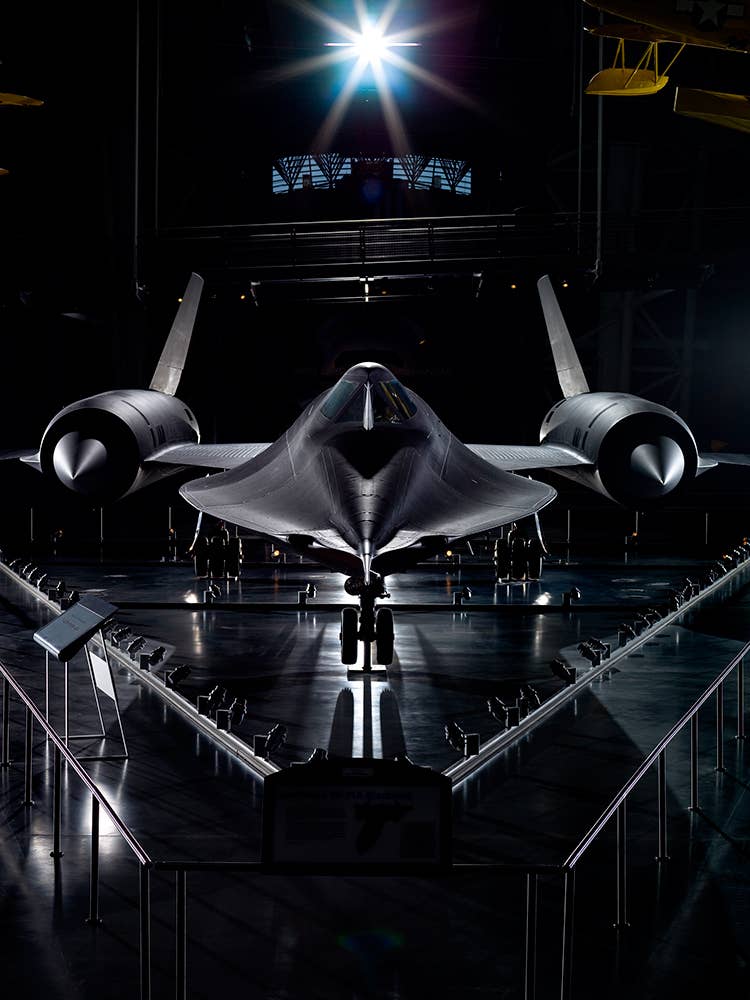
Stealth, beauty, and speed are the hallmarks of the SR-71. [FLYING Archives]
Following the loss of a U-2 reconnaissance aircraft over the Soviet Union on May 1, 1960, the Eisenhower administration sought a new aircraft from Lockheed (NYSE: LMT)—“one that would fly faster than any aircraft before or since, at greater altitude, and with a minimal radar cross section,” according to Lockheed Martin. Lockheed needed “to build the impossible—and do it fast.”
Development work on an aircraft to improve the United States’ intelligence-gathering capabilities had already begun at Lockheed’s Skunk Works in Burbank, California.
During President Dwight D. Eisenhower’s second term, tensions between the U.S. and the USSR escalated significantly. When Gary Powers’ U-2 aircraft was hit by Soviet surface-to-air missiles and he was forced to bail out and then was captured, the Cold War became even hotter.
After the inauguration of President John F. Kennedy on January 20, 1961, relations between the two nations deteriorated even more—due to incidents like the Bay of Pigs, the loss of another U-2 over Cuba, the erection of the Berlin Wall, and the Cuban Missile Crisis. An improved spy plane was desperately needed.
Delivering ‘Impossible’ Technologies
Considered one of the best aircraft designers of the 20th century, Clarence “Kelly” Johnson led Lockheed’s Skunk Works team that had previously delivered “impossible” technologies on “incredibly short, strategically critical deadlines” (including the U-2).
However, this new aircraft was radically different. “Everything had to be invented,” Johnson recalled. Nonetheless, he committed the Skunk Works team to create such an aircraft—and to have a prototype flying in “a mere 20 months.”
The new airplane’s speed was mandated to exceed 2,000 mph—1,740 knots—and not for short, after-burner-driven bursts, but to maintain that speed for hours. However, at that speed, atmospheric friction generates temperatures that could melt a conventional airframe of the time.
Dealing with the issue of extreme heat, there were numerous design and material challenges. Designers decided that only a titanium alloy would provide the strength needed, be lighter than stainless steel, and be durable enough to withstand excessive temperatures and speed.
The titanium alloy was covered with a corrugated skin that was heat-resistant. The concept of a “stealth aircraft” was new, while the use of titanium was also an almost unexplored area of engineering. Because titanium is a very sensitive material, new tools and processes had to be developed.
In regard to heat, while the airplane’s leading edges would be subjected to high temperatures, the ambient temperature that the aircraft would be flying through was minus-60 degrees Fahrenheit.
The team’s engineer Ben Rich grappled with this for long hours before he remembered that black paint both emits and absorbs heat. To help redirect the heat caused by friction, the aircraft was painted black, which led to its name: “Blackbird.”
First Flights and Modifications
Lockheed designated the Blackbird prototype the A-12. Its first flight occurred on April 30, 1962. The A-12 was a single-seat aircraft; in total, 13 A-12s were produced, and they were used in a top-secret CIA program. As FLYING contributing author Peter Garrison noted in his column, Technicalities (FLYING, October 1994), “Lockheed delivered an airplane…that could cruise at almost 2,000 knots 15 miles above the ground, and had an unrefueled range of 2,300 nm. At that time, such performance was unheard of. But the technology for it existed or lay just within reach; this was, remember, the era of the X-15 and the XB-70 as well.”
The new aircraft would inevitably draw comparison to the X-15, powered by a single Reaction Motors XLR99 57,000-pound thrust liquid propellant rocket engine, and famously taken to a record-shattering speed of Mach 6.7 by Air Force Capt. William “Pete” Knight during an Oct. 3, 1967 flight that reached an altitude of 102,100 feet.
Another A-12 variant was designed as an interceptor. Air-to-air missiles and another cockpit were added for a second crew member to operate radar equipment. This was the YF-12, and it looked identical to the A-12 except for its nose. Three YF-12s were constructed and operated by the U.S. Air Force. A third variant was the M-21, which had a pylon on its back for mounting and launching one of the first unmanned drones. Two M-21s were built; however, the program was stopped in 1966 after a drone collided with its mothership, killing one of the pilots.
The SR-71 Is Born
The final derivative of the A-12 had a twin cockpit and larger fuel capacity. Flight tests on the improved prototype continued, and the airplane broke height and speed records. On July 20, 1963, it achieved a sustained speed above Mach 3 at an altitude of 78,000 feet.
Called the SR-71—SR for Strategic Reconnaissance—it first flew on December 22, 1964, piloted by Robert “Bob” Gilliland, a Lockheed test pilot. According to the National Museum of the U.S. Air Force, the first SR-71 entered service in January 1966, at Beale Air Force Base (KBAB) in California. This version would fly intelligence missions for the U.S. Air Force for more than 30 years. A total of 32 SR-71s were built, according to the National Air & Space Museum. Including all the variants, there were a total of 50 Blackbirds built.
A key modification of the SR-71 was a reduction of its radar image. Although the initial test flight had gone well, there were rumors of new advances in radar by the Soviets, so the U.S. government requested the radar profile be reduced.
To comply, the Skunk Works team redesigned the aircraft’s surfaces to avoid reflecting radar signals, moved the engines to mid-wing, and added radar-absorbing elements to the aircraft’s special paint.
The improvements were radar-tested using a full-scale model of the Blackbird. The results were definitive; although the Blackbird was more than 100 feet long, it “would appear on Soviet radar as bigger than a bird but smaller than a man,” according to Lockheed. Skunk Works staff “had succeeded in reducing” the Blackbird’s “radar cross-section by 90 percent!”
As described by the Smithsonian Institution, “the Lockheed SR-71 was a twin-engine, two-seat, supersonic strategic reconnaissance aircraft. Its airframe was constructed largely of titanium and its alloys; while its vertical tail fins were constructed of a composite to reduce the aircraft’s radar cross-section. It was equipped with Pratt & Whitney J58 turbojet engines that featured large inlet shock cones.”
The engines were as complex as the rest of the aircraft. At the time, the J58 engines were the only engines built to continuously use afterburners (which is why the SR-71 consumed so much fuel). When the airplane was flying at supersonic speed, each engine inlet was “blocked” by a spike, which moved forward and backward depending on the airplane’s speed.
The SR-71 in Operation
Interestingly, no Blackbirds ever flew over Soviet airspace, because the U.S. stopped Soviet overflights after the 1960 U-2 incident. However, SR-71s were used over Eastern Europe, the Middle East, Vietnam, North Korea, and locations that have yet to be declassified.
No Blackbird was ever lost to enemy fire. However, the airplanes’ reliability was an issue; 12 of 32 were lost to accidents. In addition, it was very complicated to operate and fly. According to aviation historian Peter Merlin, a great deal of effort was required to get an SR-71 into the air. “It took an army of people to prepare the aircraft. A Blackbird operational mission essentially had a countdown, like a space mission, because there was so much preparation involved in both getting the crew ready and the vehicle ready—an unbelievable amount of effort and manpower.”
Piloting the Blackbird
Piloting the Blackbird was a very difficult assignment that took total concentration. However, its pilots welcomed the challenges. According to the Lockheed Martin website, Air Force Colonel Jim Wadkins said, “At 85,000 feet and Mach 3, it was almost a religious experience. Nothing had prepared me to fly that fast… My God, even now, I get goose bumps remembering.”
Because of the SR-71’s speed, normal visual references, such as highways, rivers, and metropolitan areas, were replaced by larger objects—mountain ranges, coastlines, and large bodies of water.
Blackbirds were unaffected by air defense systems because of their incredible speed and high-altitude operational characteristics. While the SR-71 had electronic countermeasures, its main defensive system against missiles was simply to outrun them. As quoted from a documentary about the SR-71 Blackbird on PBS, “If a surface-to-air missile launch was detected, the standard evasive action was simply to accelerate and outfly the missile.”
Lockheed’s Johnson announced in 1981 that more than 1,000 missiles had been launched at the SR-71, but none of them had damaged one of the aircraft.
NASA's SR-71 Program
The Air Force retired the remaining SR-71s in 1990, but NASA continued to use four Blackbirds through the 1990s and early 2000s. At the SR-71’s service ceiling of 85,000 feet, it was possible to see the curvature of the Earth; it was an excellent experimental unit for space travel. With its speed and height capabilities, the aircraft was used as a platform to conduct research and experiments in aerodynamics, propulsion, structures, thermal protection materials, high-speed and high-temperature instrumentation, atmospheric studies, and sonic boom characterization.
NASA’s high-speed and high-altitude aeronautical research occurred at Dryden Flight Research Center, which was located within the boundaries of Edwards Air Force Base. Dryden’s SR-71 activities involved other NASA research centers, government agencies, universities, and commercial firms.
NASA’s SR-71 program was canceled in late 2001.
An Icon of the Cold War Era
The Air Force retired its fleet of SR-71s on January 26, 1990, owing in part to defense budget cuts and the high costs of operation. As technology improved, the SR-71 was replaced by satellites and UAVs, which offered instant access to surveillance data.
The SR-71 first leapt into the skies in December 1964. Many consider it the most iconic aircraft of the Cold War era. On July 28, 1976, a Blackbird set records that remain unbroken—flying at a sustained altitude of 85,069 feet and a top speed of 2,193.2 miles per hour, or Mach 3.3.
Although most of us will never be privy to the critical information Blackbirds gathered, they provided the United States with detailed, mission-critical reconnaissance for more than two decades. The SR-71 was one of several spy airplanes built to venture into enemy territory without being shot down or even detected. From 80,000 feet, an SR-71 could survey 100,000 square miles of Earth's surface each hour.
Most of the remaining Blackbirds are stationed at museums or military bases across the U.S. On its retirement flight from Los Angeles to Washington, D.C., on March 6, 1990 (on the way to the Smithsonian National Air & Space Museum), a Blackbird flew coast to coast in a record-setting 1 hour, 4 minutes, and 20 seconds.
“It still looks like something from the future, even though it was designed back in the 1950s,” Merlin said. “Because of the way the fuselage bends and the wing curves and twists, it looks more organic than mechanical. Most conventional airplanes look like someone built them—this one almost looks like it was grown.”
FLYING thanks brickmania.com, CNN, Lockheed Martin Corporation, migflug.com, NASA, nationalinterest.org, the Public Broadcasting Corporation, the Smithsonian Institution, and sr-71.org for information and photographs used in this article.
Aircraft Specifications
| Armament: | None |
| Engines: | Two Pratt & Whitney J58s; 32,500 lbs. thrust, each, with afterburner |
| Crew: | Two |
| Max speed: | Mach 3.3 (unmodified) |
| Range: | 2,824 nm (unrefueled) |
| Service Ceiling: | Over 85,000 ft. |
| Wingspan: | 55 ft., 7 in. |
| Length: | 107 ft., 5 in. |
| Height: | 18 ft., 6 in. |
| Max takeoff weight: | 172,000 lbs. |
An SR-71 on a NASA mission. [Credit: NASA.gov]

Subscribe to Our Newsletter
Get the latest FLYING stories delivered directly to your inbox

